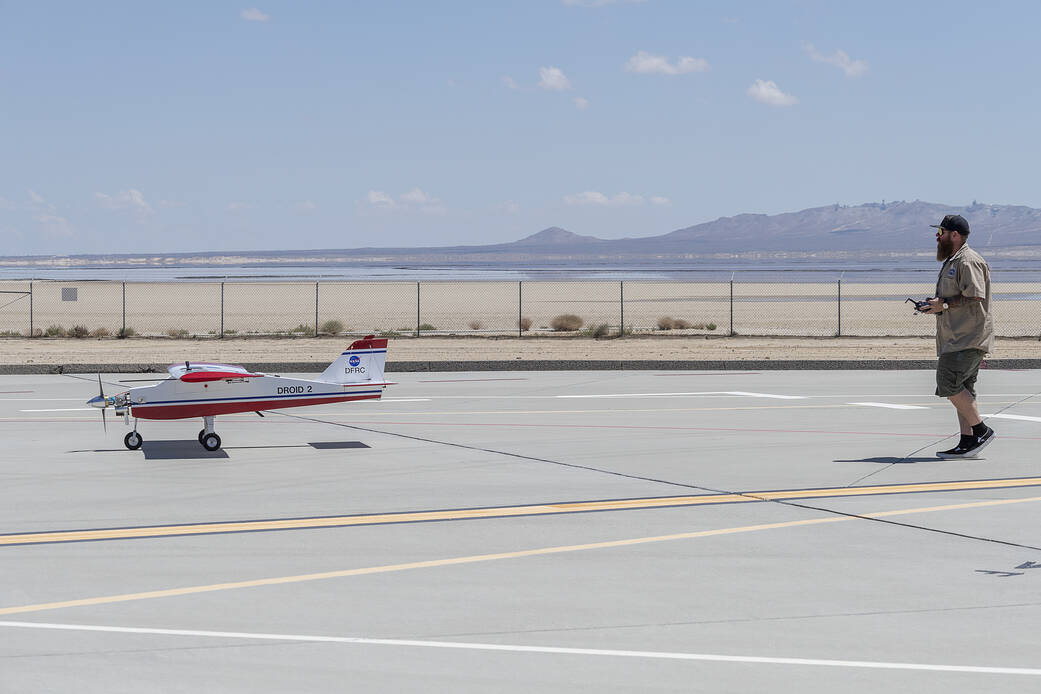DROID 2捉风
Justin Hall lands the Dryden Remotely Operated Integrated Drone 2 (DROID 2) aircraft at NASA’s Armstrong Flight Research Center in Edwards, California, on Aug. 22, 2023, as part of the Advanced Exploration of Reliable Operation at Low Altitudes: Meteorology, Simulation and Technology campaign. The data gathered by studying wind from the ground to 2,000 feet could improve the safety of takeoff and landing for future air taxis and improve weather forecasts.
DROID 2, a fixed wing aircraft, acted as a wind sensor during the study. The remotely piloted drone, with its 10-foot wingspan, flew repeated passes at different predetermined altitudes. It completed the last flights for the campaign on Aug. 31.
See more photos from the wind study.
Image Credit: NASA/Steve Freeman
2023年8月22日,贾斯汀·霍尔将德莱顿远程操作集成无人机2 (DROID 2)飞机降落在NASA位于加利福尼亚州爱德华兹的阿姆斯特朗飞行研究中心,这是低空可靠操作高级探索:气象,模拟和技术活动的一部分。通过研究从地面到2,000英尺的风力收集数据可以提高未来空中出租车起飞和降落的安全性,并改善天气预报。
DROID 2是一架固定翼飞机,在研究期间充当风传感器。这架翼展10英尺的遥控无人机在不同的预定高度反复飞行。它在8月31日完成了最后一次飞行。
图片来源:NASA/Steve Freeman

